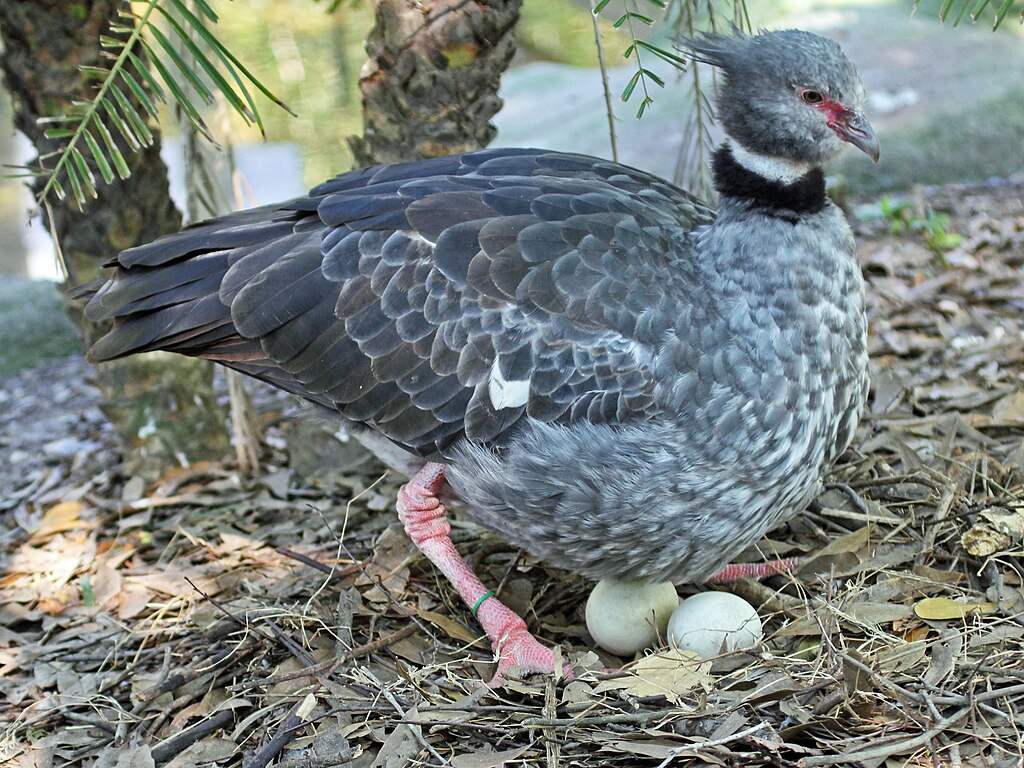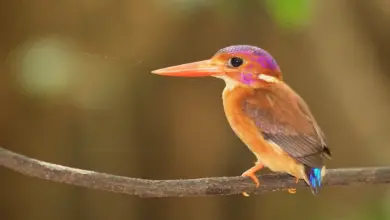Bird nests – you may think they are very mundane. But we are here to surprise you with the 12 most elaborate bird nests in the world!
If you think that small narrow cup-shaped nests made with twigs, grass, and other small objects are all there is to nest building, think again.
You may be thinking of a common sparrow, crow, or songbird with their plain Jane nests, my friend, but some birds can give the world’s best architects a run for their money!
In this article, we look at the most elaborate nests in the world and why their builders go about making them.
1. The Montezuma Oropendola
The tropical coastline of the Caribbean is often dotted with trees that are the natural habitat of the Montezuma Oropendola.
These upside-down hanging structures made from twigs and sticks are unique because you can find as many as 30-40 of them on a single tree.
But there’s more to it than that – these nests are the domain of a single alpha male.

He copulates with each of the 30-40 females on that tree and produces babies.
But this “harem” is rather short-lived because once the females hatch their eggs, it takes hardly 15 days for the hatchlings to leave, and the nest goes silent.
2. Sociable weavers
Perhaps the most widely recognized and the most elaborate nests in the world are built by sociable weavers.
Natives of the Kalahari Desert in S. Africa, the sociable weavers, live up to their name. They live in one giant nest that houses the entire colony (which may consist of up to 100 birds) instead of having a separate one for each bird!
Generations after generations of birds continue to live in the same nests (think of the effort it would take to make a new one), so these nests remain occupied for decades, maybe even centuries.

Most often, the base of these huge nesting sites is sturdy trees and electric or telephone poles.
The construction material used is plain old twigs – the mastery of their craft and their dedication to the task of building makes the sociable weaver nests so large.
These communal nests are so large that they hold the record for the largest nests in the world. Interestingly, the commune is not a free-for-all-all place where anyone can sit anywhere.
There are chambers meticulously built into the larger superstructure, lined with grass and feathers to make them comfortable for each resident.
They even built “gates” to each chamber lined with sharp and pointy things (like sticks) to stop predators from entering. Talk about security!
Each chamber may be 4 to 6 inches wide inside. The entrances are rectangular, about 3 x 10 inches in size. One nest may have as many as 100 such chambers.
The Kalahari desert is a harsh place to survive in, with temperatures reaching as high as 110–115 °F during the summer months (during daytime). The winter months can see nighttime temperatures dropping as low as ten °F.
The birds use these chambers to their advantage, huddling together in the winter nights in the central chambers to maximize body heat and then moving towards the outer chambers during summertime to keep cooler.
There are, of course, encroachers when you build such a large piece of prized real estate. The pygmy falcon often impinges upon the nests of sociable weavers. However, the sociable weavers do not mind. It’s a bit of charity work for them for the poor pygmy falcons trying to survive the harsh Kalahari weather.
The nests can get so big over time that their weight can reach 1-2 tons. Sometimes, they can get so heavy that the poor tree supporting the nest can collapse, especially during the rainy season when water logging in the chambers increases the weight even more.
3. Bushtits
What do you do when you have limited space to build a house but lots of people to live in? You extend your house vertically.
The Bushtits are a resident of the American Southwest. They live in brushy or wooded areas, mostly in places somewhat at a height from sea level (though not on mountains).
These tiny little birds live in communes of up to 40 birds. Each bushtit family breeds up to 6 to 10 eggs a season, maybe going up to 15 in some cases.
Their solution is to build a tall, hanging sac-like structure that can house all their eggs and themselves. The nest is usually made with one of the strongest substances in nature – spiderwebs. Other elements used in the construction are moss and vegetation.
The nest construction is not easy – the Bushtits carry on nest building for up to a month at a time.
To achieve the drooping, sac-like look, the adults of the flock sit inside the nest while the construction is going on, just to push the nest down with their weight (they might just be lazy, but we are giving them the benefit of the doubt here).
As you may imagine, a structure like this requires a solid foundation that can support the weight of the family. So, the soon-to-be mama and papa bird go about testing several sites before actually starting construction.
Once completed, the structure is very tightly woven and solid. A small opening is at the top, often facing to the side and hidden by leaves or other camouflage material to fool intruders.
When the nest is at its liveliest and the hatchlings are about ready to fly out, you can often see it pulsating with activity.
As in humans, jealousy prevails in the bird kingdom as well. You will often find warblers, goldfinches, and vireos stealing nest material from the bushtits’ nest. They end up causing considerable damage at times.
4. Baya Weaver
So what is a male bird to do if it is going to be judged on the quality of its nest to have any chance of mating? Build as beautiful and intricate a nest as possible.
The Baya Weaver, a native of Southeast Asia, particularly the Indian subcontinent, is a small, sparrow-like bird but yellow.
Everything the male does in this species is for the benefit of the female. Even the bright yellow and black colored plumage is something they develop during the monsoon season to attract females.
The nest is another part of the mating process, where the male builds individual nests and then puts them on display for the females to inspect.
The nests themselves are shaped like a sock, with a vertical cylindrical-shaped entrance that leads into a large, central chamber for the eggs to reside.
The male picks out materials such as grass, palm fonds, paddy strips, and other sturdy things it can find to build these magnificent nests.

It may take him more than 500 trips coming and going to get the materials ready for the nest! Even the process of weaving and creating the nest takes a long time.
Once the nests are ready, the females of the species evaluate them on various parameters to choose the best one. Some of these include:
- The height of the nest (higher nests are considered safer from predators)
- The thickness of the branch on which it was built (to support the nest better)
- Nests built on trees that are thorny or bushy
- How elaborate the entryway (the elongated tube) is
- Fine craftsmanship in weaving.
Studies have shown that the location factors are perhaps more important than the actual quality of the work.
Unfortunately, despite the rigorous examination of the nests, they are not safe from common garden lizards and sometimes mice.
5. Bowerbirds
So you thought the baya weavers were making impressive nests? Welcome to the insanely colorful and fantastic world of the male bowerbirds.
While the nest itself is something to talk about, it is the accouterments that come with it that make it stand out from competitors to the throne of the most elaborate bird nests.
Male bowerbirds decorate their nests with colorful displays of objects that they can find in patterns and themes that can put seasoned artisans to shame.
You can find flowers, colored berries, iridescent insects, pieces of plastic, and many other things you might never have imagined in a bird’s nest.
Take, for example, the satin bowerbird – who just loves the color blue. He will decorate his nest with anything blue that he can find, be it bottle caps, blue ball pens, blueberries, or any other blue-colored cloth or plastic he could get his beak on.

Other bird species may go for a cornucopia of colors, using anything they can find to decorate their beautiful homes made of twigs and brushes.
The Great Bowerbird lines its double-walled nest with green or white objects, whereas the Vogelkop bowerbird favors multi-colored arrangements of flowers, fruits, and other objects.
All this – just to get the female to give one look at their nests. Research has suggested that many of the females will mate with the first male they visit – so it might just be a wasted effort.
However, what is also clear is that there is a shortlisting session that happens before females make a choice, so there might be some reward for the effort after all.
What’s even more interesting is that these beautiful creations aren’t used for mating or breeding – the actual nest is made by the female later on. It just shows that if you are a bowerbird, whatever you do, it’s never enough for the ladies!
6. The Mallee Fowl
We talked about the largest tree nests in the world, made by the sociable weavers. But nests aren’t always built on trees. Surprised?
The Mallee Fowl of Australia builds nests on the ground with a mound that can weigh up to 300 tons! These gigantic nests are up to 35 feet wide and 15 feet high.
This unique nest starts as nothing but a huge hole in the ground, dug by none other than the male mallee fowl. Once the hole is ready, the bird fills it up with leaves, twigs, sticks, or other organic matter that it can find around.

The female then lays her eggs in the nest, and they cover it up with a fine layer of sand to insulate the eggs. The organic matter starts to decay and releases heat, which helps to incubate the eggs.
Neither the male nor the female has to sit atop the eggs because of this beautiful and natural arrangement.
Unfortunately for the babies, they have to claw their way out of the huge hole filled with decaying organic material before they can reach the ground.
Studies have shown that it may take up to 15 hours for the chicks to reach the top.
7. Southern Screamer
Native to South American countries such as Peru, Paraguay, Brazil, northern Argentina, and others, the southern screamer is called so because of its distinct scream, which you can hear from afar.
These unique crested water birds live in marshy areas near lakes and lagoons.
You can hear their noisy mating calls from a distance of up to two miles, so if it’s their mating season, you should keep your headphones near you.

These birds make huge ground nests made from straw, aquatic plants, weeds, and other things that they can find in and around the water body they are living near.
Their nests are often hard to reach, even though they are always close to a water source. This is because you can’t find their nest (despite their size). After all, it looks pretty much the same as everything around it.
Southern screamers are pair-bonded for life, so both the male and female will do the job of building the nest.
8. Sand Martins
Sand martins are sociable birds that live in large groups of up to 2,000 birds in a single colony. Their nests are unusual because they are nothing more than holes dug into a sand wall.
But with such a large colony of birds, a large sand martin nesting wall will be riddled with several holes, making it look like an intricately perforated piece of cloth from afar.

Typical nesting sites include mud walls that are loosened by water. Each nest would be about 25 inches deep inside the wall.
Typically, these sandbanks are near a source of water because sand martins eat insects that live near water.
They line the interior of the burrowed nest with grass, leaves, straw, twigs, feathers, and other things to make it comfortable and insulated from the weather.
9. Ovenbirds (Rufous Horneros)
Ovenbirds are named after the nests that they make – because the nest looks almost like an oven-made mud pot, which sometimes even has a DIY lid to cover it.
These nests are made from nothing more than fibers, hair, and straw. However, as the South American sun bakes these things into a solid mass, the nest starts to resemble an earthen pot.
These nests are, in fact, so solid and unique that they are often reused by many other birds after the ovenbirds have left them behind. Sparrows, hummingbirds, finches, and many other species reuse these nests.
The ovenbird takes nearly six weeks to prepare these earthen pot-like nests. However, they have also adapted to living in the presence of humans by using structures made by them to protect their eggs.
10. Penduline Tit
Penduline tit males make a nest that can be considered a masterclass in weaving. These birds have nests that hang like a bulbous pendulum from the tree branch, made from wool, hair, spider webs, and soft plants.
Humans have been known to use their nests are purses because they are just so expertly made! Moreover, these nests are light enough to hang on a branch.

These nests are usually made above water because that’s a safe place for the bird to live. Penduline tits take months to make these beautiful nests.
The designs are so well-thought-out and intricate that one particular species makes nests with a false entrance at the bottom! The real entrance is from a side flap.
11. The Southern Masked Weaver
The male southern weaver weaves an intricate hanging nest out of the grass, palm blades, and a bit of reed. It intricately intertwines these to make not one but several circular-shaped nests, each built over 10-15 hours!
The nests are a way of showing the male’s building prowess to the females. If a female nearby finds the nests attractive enough, it will then choose one of these nests as a final nesting site.
The female then adds feathers, soft grass, and other luxuries of life to make the nest suitable for the baby chicks to hatch in.
12. Bald Eagles
We will close our list of intricate nests with the magnificent nests of the largest bird in North America – the bald eagle. One of the largest nests in the world, bald eagles’ nests can be as big as 4-6 feet in diameter and as deep as 3 feet.
What’s even more amazing is that these nests can weigh up to a ton! The design is a typical cup-shaped nest, with soft grass in between and sticks to line the outer surface and give it solidity.
The bald eagles have learned that finding a nesting site is hard, so they simply keep on adding more material to their existing nest, making it bigger each year.
While most eagles build nests atop tall trees, bald eagles can even build their nest on the ground if there is no other option available.
In Conclusion
We hope these birds and their magnificent nests have given you an inkling of the diversity and intricate skill involved in nest-making. Birds have a natural talent for building homes, much like humans.
Sadly, growth in human populations has been causing a disturbance in the nest-building activities of many of these birds. In many cases, cutting down trees has left birds with no place to build a nest or rear their hatchlings, causing their numbers to go down significantly.
We need to learn to live in harmony with the nature surrounding us and ensure that these beautiful creatures can continue living and rearing their young in the way they have been doing for millennia.





